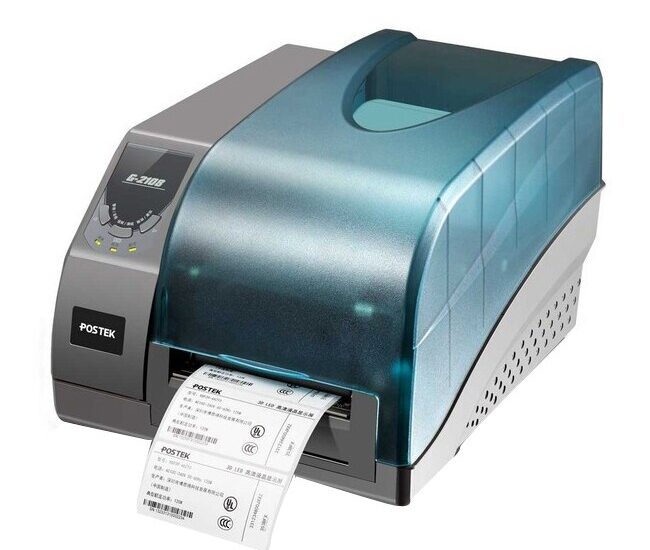Due to variables affecting its end-use, the global barcode printers market is anticipated to expand in terms of sales at a CAGR of 7.4% from 2022 to 2032. Barcode and product labels are produced using specialised printers called barcode printers. In contrast to regular printers, barcode printers use different consumables to produce a barcode print image. These printers are made in such a way that they can print barcodes that are both clear and machine-readable at faster printing speeds and for less money.
Request for a sample @
https://www.futuremarketinsights.com/reports/sample/rep-gb-1625
A Barcode printer is defined as an electronic device designed specifically for the printing of barcodes. The working principle and build of a barcode printer are slightly different from computer printers as it uses ribbons and labels working in tandem to get a barcode printed. Barcode printers usually don’t have programmable logic controllers, but rely on an external computer system.
Growth in the manufacturing sector is reviving after the 2008 economic crisis. Automation and streamlining of manufacturing processes are being adopted by a large number of manufacturing companies worldwide to reduce time and material wastage, thereby improving efficiency and output. Barcoding is one such technique that is increasingly being adopted. This process has reduced production time considerably in the manufacturing process, thereby driving demand for barcode printers.
Barcodes have become the de facto standard for product information storing and labeling. Retailers worldwide use barcodes for the hassle-free recording of supplies and commodities and their sales to customers. Barcodes imprinted on labels are stuck to the products and they record information about the product count, date of manufacture, date supplied to the retailer, selling price, etc.
When these products are scanned, the information is retrieved and monitored. This entire process, which is achieved within a matter of seconds, not only increases efficiency but also minimizes errors. This has helped retailers record their products and inventory on shop floors and warehouses.
However, the threat of RFID tags as substitutes to barcode labels and the low compatibility of barcode printers with different operating systems act as restraints in the global barcode printer market.
For critical insights on this market, request to ask an expert here @
https://www.futuremarketinsights.com/ask-question/rep-gb-1625
Segmentation highlights
The market is categorically divided into six segments based on printer type, printing technology, consumables, application, distribution channel, and region. The printer type segment of the barcode printers market includes Desktop Barcode Printer, Industrial Barcode Printer, Mobile Barcode printers and Others.
On the basis of printing technology, the market has been divided into Thermal Transfer, Direct Thermal, Dot Matrix, Laser and Ink Jet. On the basis of distribution channels, the market is segmented as Direct-to-End User, Direct-to-OEM, Dealer/Distributor, and Systems Integrator. On the basis of application, the market has been divided into industrial/manufacturing, transportation/logistics, retail, healthcare, government, and commercial services.
- The Industrial Barcode Printer segment holds the highest market share of 46.1% closely followed by the Desktop Barcode Printer in the Barcode Printers Market. The Industrial Barcode Printer segment is also expected to dominate in the forecast period with a CAGR of 8.3% due to a preference of sturdy and rugged barcode printers with higher productivity.
- Thermal Transfer segment holds the highest market share amongst all with 62.8% and is expected to improve further in the forecast period owing to very less cost involved, while Dot Matrix, Laser, and Ink Jet printing technologies are least preferred technologies and are on the verge of being phased out.
- Dealer/Distributor is the most preferred supply channel and is expected to dominate in the future due to higher distribution efficiency, low supply costs and faster delivery times.
Key Segments in the Barcode Printers Market
By Printer Type:
- Desktop Barcode Printer
- Industrial Barcode Printer
- Mobile Barcode Printer
- Others
By Printing Technology:
- Thermal Transfer
- Direct Thermal
- Dot Matrix
- Laser
- Ink Jet
By Consumables:
- Ribbons
- Wax Ribbons
- Wax/Resin Ribbons
- Resin Ribbons
- Labels
By Application:
- Industrial/Manufacturing
- Transportation/Logistics
- Retail
- Healthcare
- Government
- Commercial Services
By Region:
- North America
- Latin America
- Asia Pacific
- Middle East and Africa (MEA)
- Europe
Speak to our Research Expert @
https://www.futuremarketinsights.com/ask-question/rep-gb-1625
About Future Market Insights (FMI)
Future Market Insights (ESOMAR-certified market research organization and a member of the Greater New York Chamber of Commerce) provides in-depth insights into governing factors elevating the demand in the market. It discloses opportunities that will favor the market growth in various segments on the basis of Source, Application, Sales Channel, and End Use over the next 10 years.
Contact Us :
Future Market Insights, Inc.
Christiana Corporate, 200 Continental Drive,
Suite 401, Newark, Delaware – 19713, USA
T: +1-845-579-5705
For Sales Enquiries: sales@futuremarketinsights.com
Browse All Reports: https://www.futuremarketinsights.com/reports

